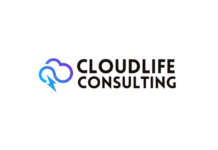Spending evidence suggests that the cloud, containers, artificial intelligence and robotics projects will set the tone for a significant turnaround in technology spending next year.
The year 2020 served as a hasty but successful evidence of the idea of how companies should be digitally transformed. Chief Information Officers say that in general, the pace of infrastructure investment has either rebounded or is likely to do so in the near future, setting up what could be 2021 better than we have previously reported
This week’s Breaking Coverage will refresh our new thinking on investment levels and goals for the coming year. We will also share new data on Business Technology Analysis from the most recent COVID drill-down report.
Forced march towards digital transformation
At the beginning of this year, we have announced a 4 to 5 percent decrease in expenditure on information technology in our 2020 forecast. While the third quarter is better than anticipated, there is no need to adjust the forecast. However, recent survey results and conversations with C-level executives lead us to conclude that 2021 could surpass our 2% growth estimate and that number could be as high as 4% to 5% in the coming year.
A greater awareness of how to exploit the cloud, improved growth, market restructuring and new ETR spending results indicate that rapid digital business strategies are paying dividends. We assume that CEOs and boards of directors are able to double the impact of the learning programmes of the last ten months.
Our analysis indicates that the interactive experiment placed on us by COVID-19 has created a dynamic where CXOs tend to double down on those bets and further compress the future. In 2021, we assume that IT investment will be the beneficiary.
CIO purchasing habits are showing promising signs
Although the overall spending momentum in the ETR survey results remains silent compared to 2018 and 2019, the pointed questions raised by the CIOs in the new drill-down analysis give us cause for optimism. The map below displays the answers to the November ETR survey asking CIOs, “When do you see budgets returning to pre-COVID levels? ”
Historically, CIOs have been conservative in our opinion, and so we’re keying the upper end of the confidence interval in the above results. While this may be a premature prediction, we think it represents both the reported earnings forecast of major bellwether firms such as Microsoft Corp., Dell Technologies Inc., Hewlett Packard Enterprise Co., Cisco Systems Inc., Amazon Web Services Inc. and others, as well as the unreported upside and down demand that we believe persists in the global market.
The key figure in the above data is that just 4 per cent of respondents feel that spending levels will not return to pre-COVID levels for more than two years. And only another 20% say this won’t happen until after 2021. Rational people can say that there is already a significant majority of the poll that forecasts a gloomy view and that winter is coming in the northern hemisphere of the world’s major economies. But with the vaccine arriving soon, the clarity that companies have acquired about the future new economy and the slow investment in 2020 is, we agree, more upside than down.
Tactical moves are leading to strategic pivots
The map below shows the findings of the COVID drill-down survey that asked respondents to identify the factors that made market resilience possible during the pandemic.
Not unexpectedly, the opportunity to operate remotely was a key consideration. Forty-four percent of respondents pointed to corporate continuity plans as a primary factor. However some customers have advised us that their enterprise continuity strategies are much more focused on disaster recovery and as such, they have made tactical investments to improve their digital capabilities.
C-suite assistance and fiscal stability have been established as main considerations. We see this as a good trend in that the corner office and the boards of directors are digitally tuned. They recognise the value of making digital “right” and we agree that they now have strong evidence from the past 10 months on which investments will make the best of their paybacks. As such, we expect extra support for digital projects. Balance sheets are high for many businesses, as a handful have tapped corporate debt and profit from the low interest rate climate.
Twenty-seven percent pointed to the use of new technology as a cause. Some of these, it may be argued, fell under the first group – operating remotely. The bottom line is that the 10-month proof of concept from COVID places companies in a position to move effectively in 2021 to further drive their digital transitions by filling holes and finding strategies that can deliver competitive advantage.
Containers, AI and RPA are pushing new technologies
We now want to better understand which technology consumers are introducing. Isolates the Latest Adoptions part of the ETR Net Score methodology. Note, Net Score looks at the proportion of clients who follow New, Investing More, Spending Flat, Spending Fewer and Substitute. Net Score is determined by taking (Adopt New + Spending More) – (Spending Less + Replacement). It’s an indicator of the speed of spending.
That information is segregated from the above map on the New Adoptions section. If you can see, the three major fields of the CIOs apply to Modern Adoptions related to containers, computer learning/artificial intelligence and robotic process automation. In our opinion, there are four takeaways from this data:
- Containers drive the modernization of software and allow developers to be more efficient and agile;
- Machine learning and AI are being applied to vast volumes of data we’ve accumulated over the last 10 years and companies are seeking to gain more meaning from data and drive insights using machine intelligence;
- With robotic process automation, as we mentioned earlier, the automation mandate is here and the pandemic has also intensified. Organizations are programming software robots to carry out global activities and accelerate automation projects through their organisations;
- These factors all contribute to productivity increases, as stated by CIOs in previous surveys.
CIOs double in on the cloud
You may be looking at the previous slide and wondering: with all this discussion about cloud migration, why isn’t cloud computing higher? This issue is answered in the table below. It displays the percentage of consumers using the ETR Net Score methodology and isolates in those places where consumer spending is increasing.
Notice that the Cloud Storage ratio is 46% higher. This shows us that consumers have usually already embraced some sort of cloud computing model and are doubling down on that commitment. Once again we see the ML/AI and RPA containers as places where consumers invest more – over the 40% mark. There are some other fields of expanded investment, such as the database, but these 40% are notable.
Factors for Viewing
As we exit 2020, in addition to our investment results, we are tracking four main factors:
- The tendency to shelter in place is growing, particularly with the new incoming administration. We’re looking at how this, along with the fiscal stimulus, will have an effect in 2021. We feel like more lockdowns, while stressful, are going to be short-lived, and we’re more organised this time around. We assume that this will lead to more pent-up demand and back our new premise.
- We firmly agree that the silver liner of this awful year is the experience we’ve absorbed. Pace and adapting to the unexpected is today, more than ever, a main component to success.
- C-level execs who we think would have top-down digital assistance. The meme who was most responsible for your digital transition came home with the corner office and the CEOs seized the chance to act, using COVID as an instrument for change.
- While we haven’t officially updated our forecast for 2021, we plan to do so. We’ll wait until our next survey snapshot to review the most up-to-date results. We recognise that there is still a lot of pain in the market, but unlike those firms that cross the chasm, where their legacy industries are still not increasing quickly enough to compensate for the downturn, in this modern age, nearly all businesses need to go digital (at least to some extent). As a result, leading companies are accelerating technological spending, and even those survivors hit hard by COVID will emphasise technology investment.
As a result, we assume that our 2% growth figure for 2021 could double to 4% or more.
Note that both of these episodes are available as podcasts wherever you listen. Google “Breaking Analysis Podcast” and sign up for the series. We also post a full update on SiliconANGLE every week. And check out the ETR Web Site, as well as the ETR Guide we’ve made, which describes the expenditure approach in more depth.






